| |
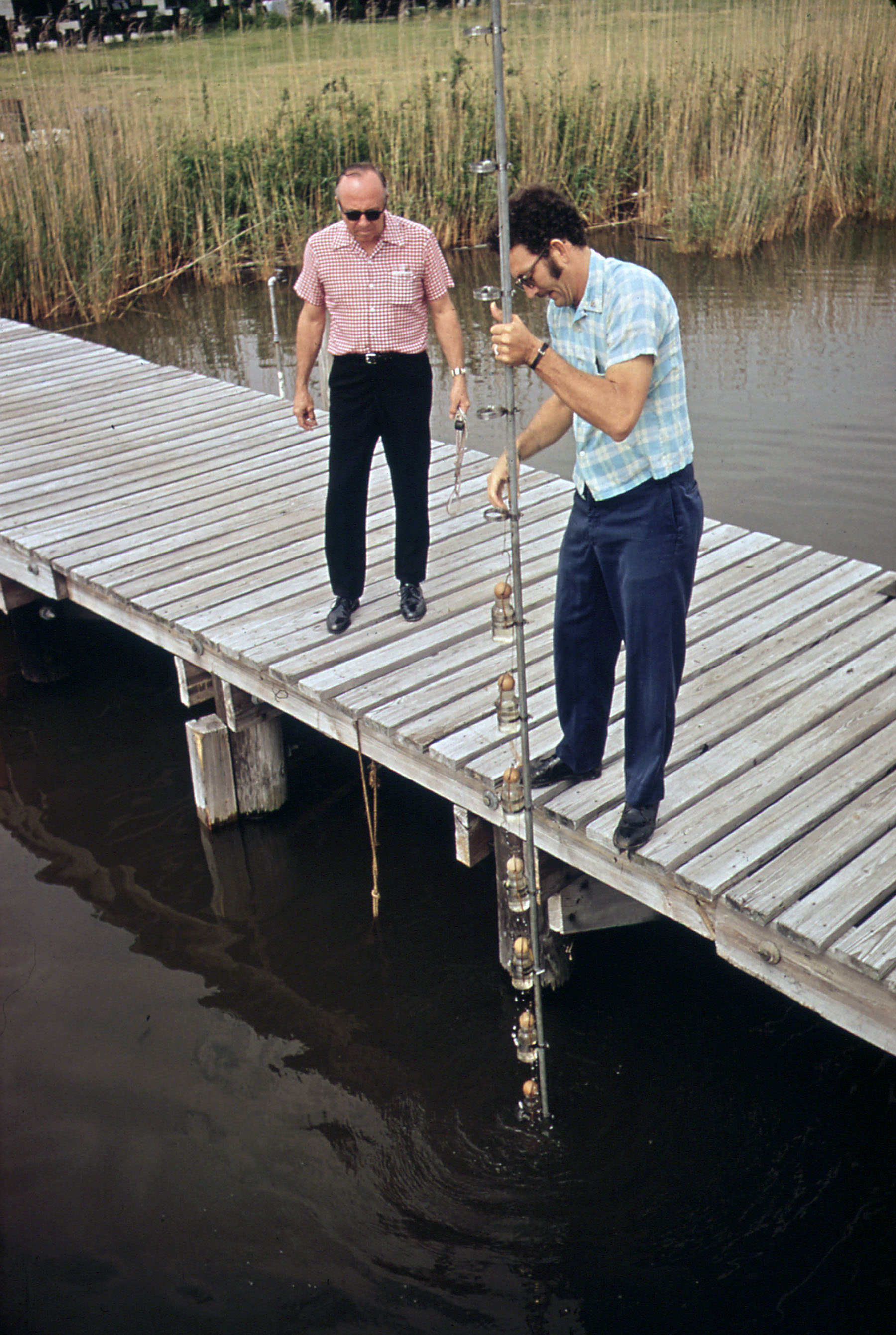 |
| |
EPA Gulf Coast water supply research laboratory, Dauphin Island. EPA personnel take water samples for determination of bacteria content with relation to the shellfish industry, May 1972. National Archives 546307 |
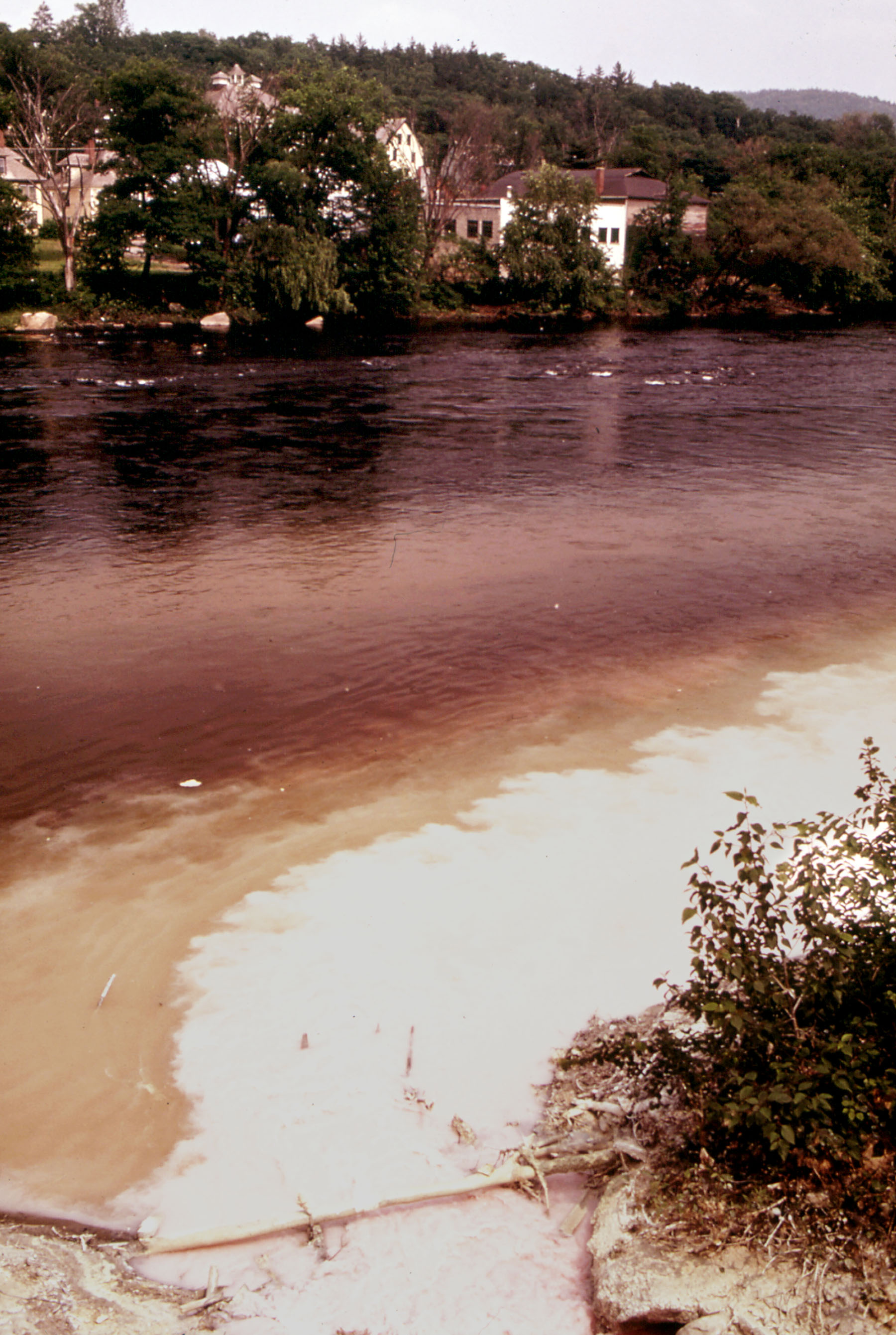 |
|
| The Androscoggin River seen from the Oxford Paper Company mill at Rumford, Maine, showing outflow of wastes from the mill, June 1973. National Archives 550723 |
|
The Clean Water Act (CWA) is the guiding federal legislation governing water pollution and ranks among the most influential of modern environmental laws. Congress passed the originating legislation in 1948 in the wake of rapid industrial and urban growth fed by World War II, but these early efforts at regulation proved inadequate and ineffective. In October 1972 – fifty years ago this month – the Federal Water Pollution Control Act (FWPCA) was passed into law as a rewrite of the 1948 legislation. The FWPCA gave direction to a new permit system for controlling releases of pollutants into our nation’s waters, granted the Environmental Protection Agency (EPA) (under Section 402 and others) the major responsibility for controlling a wide variety of water pollutants, and charged the U.S. Army Corps of Engineers (USACE) (under Section 404) with regulating a specific category of pollutants (i.e., dredged and fill material) that was related to USACE’s longstanding authority to protect navigation capacity under the Rivers and Harbors Act of 1899. The FWPCA also provided a substantive role for states in controlling pollution and participating in the federal permitting process.
The major impact of the 1972 law on USACE came through Section 404, which mandated the regulation of discharged dredged and fill material. But questions about jurisdiction remained. Initially, USACE attempted to limit its activities to waters that clearly were navigable, as traditionally defined by the Corps and sanctioned by successive Congresses. In the landmark case of NRDC v. Callaway (1975) the courts imposed upon the Corps of Engineers a much broader definition that included virtually all waters of the nation, including wetlands. Subsequent amendments in 1977, one of which renamed the law the “Clean Water Act,” provided for the issuance of nationwide and regional general permits for certain discharges, with exemptions for agriculture and silviculture, and called upon USACE to enter into memoranda of agreement (MOAs) with the Departments of Commerce, Interior, Transportation, and Agriculture, and EPA to minimize paperwork and delays in the permit process. In 1980, USACE signed an MOA with EPA that addressed original jurisdictional issues.
During the 1980s, USACE made changes to its permit regulations to strike a better balance between development needs and environmental protection as it implemented a broadened Section 404 regulatory program. In particular, USACE expanded its nationwide general permit program from 15 to 26 types of permit, creating additional categories for activities that would have only minimally adverse environmental impacts. The Corps also encouraged developers to propose activities with smaller impacts so as to qualify for the streamlined general permit authorization. USACE also expanded the scope of its public interest review for making permit decisions. In addition, the management focus of USACE’s regulatory program in the 1980s also led to several agreements with the EPA on geographic jurisdiction, agricultural exemptions, and enforcement. These agreements served to clarify each agency’s role and responsibilities in the Section 404 program with USACE assuming responsibility for conducting most of the determinations regarding geographic jurisdiction and applicability of the agricultural and silvicultural exemptions. In 1987, the Corps of Engineers issued a manual for identifying and delineating wetlands covered by the Section 404 program. Two years later, the George H. W. Bush administration established a “no overall net loss” goal for wetlands, which resulted in the development of new mitigation policies for the Section 404 program. USACE had by the end of the decade improved program management while evidencing a renewed commitment to environmental concerns in its conduct of aquatic resources regulation.
Beginning in the 1990s, both the Bill Clinton and George W. Bush administrations developed wetlands plans that emphasized increased protection coupled with even greater program efficiency and fairness. USACE continued to refine its regulatory management practices under its leadership role in the overall Section 404 program. It did so through a series of agreements with other involved federal resources agencies. In 1993, EPA and USACE issued a new definition of “discharge of dredged material,” which was revised several times in response to litigation. In 1995, USACE, EPA, and other federal agencies developed guidance on mitigation banking to increase the effectiveness of providing wetland compensatory mitigation to offset losses caused by permitted activities. By 1997, public and private entities had created more than 100 wetland mitigation banks nationwide. Throughout the decade, the Section 404 regulatory program continued to evolve in response to feedback from both the development and environmental communities concerning the regulation of private property while environmentalists challenged the issuance of numerous permits by USACE, including some of its general permits.
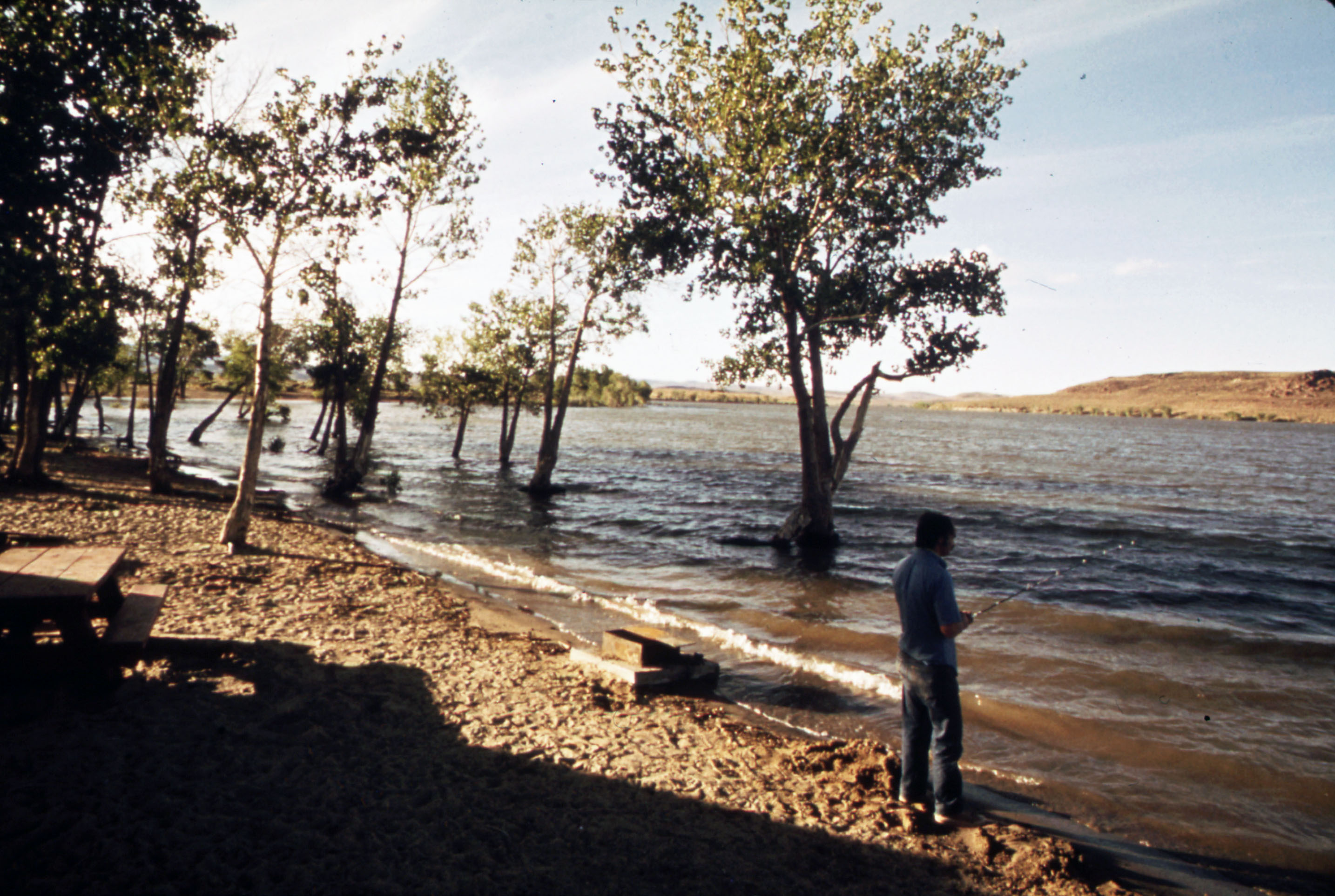 |
|
 |
|
Overflowing Lahontan Reservoir, which was built to store Truckee River waters. Too much water has been diverted into it through the Derby Dam irrigation canal, May 1973. National Archives 553082
|
|
Water snake (Natrix) at ease on a log in the clear waters of Ha Ha Tonka Lake, June 1973. National Archives 551375
|
The 2000s and 2010s saw several additional regulation and policy changes to the Section 404 permit program. In 2000, USACE established an administrative appeal program for individual permits and approved jurisdictional determinations to give regulated parties access to regional office reviews. In 2001 and 2006, the U.S. Supreme Court issued opinions that changed the geographic scope of Clean Water Act jurisdiction, and, over the ensuing decade, the EPA and Army responded by adjusting the definition of jurisdictional waters and wetlands. In 2008, USACE and EPA issued a new regulation on compensatory mitigation in the Section 404 permit program that addressed the use of mitigation banks, in-lieu fee programs, and permittee-responsible mitigation to provide compensatory mitigation for activities authorized by Section 404 permits. The new regulation also implemented a watershed approach to improve the ecological success of those compensatory mitigation projects and incorporated many of the technical and administrative recommendations made by the National Research Council. In 2022, the EPA and Army continued to define the geographic scope of Clean Water Act jurisdiction.
The heightened public and governmental emphasis on protecting the country’s environment in the early 1970s transformed the operations of USACE. Two events drove change – the growth of the environmental movement in the U.S., which included a growing public awareness and appreciation for the natural environment, and the passage of new federal laws, such as the National Environmental Policy Act, the Endangered Species Act, and the Clean Water Act. The Clean Water Act has benefitted the nation by driving significant decreases in water pollution, which has resulted in substantial improvements in the abilities of the nation’s waters and wetlands to provide clean drinking water, support populations of fish and wildlife, improve recreational opportunities, and provide other social benefits. USACE continues to make regulation and policy adjustments to improve its implementation of the Section 404 permit program and address contemporary issues and concerns. The Corps of Engineers’ Regulatory Program is committed to protecting the nation's aquatic resources and navigation capacity, while allowing reasonable development through fair and balanced decisions.
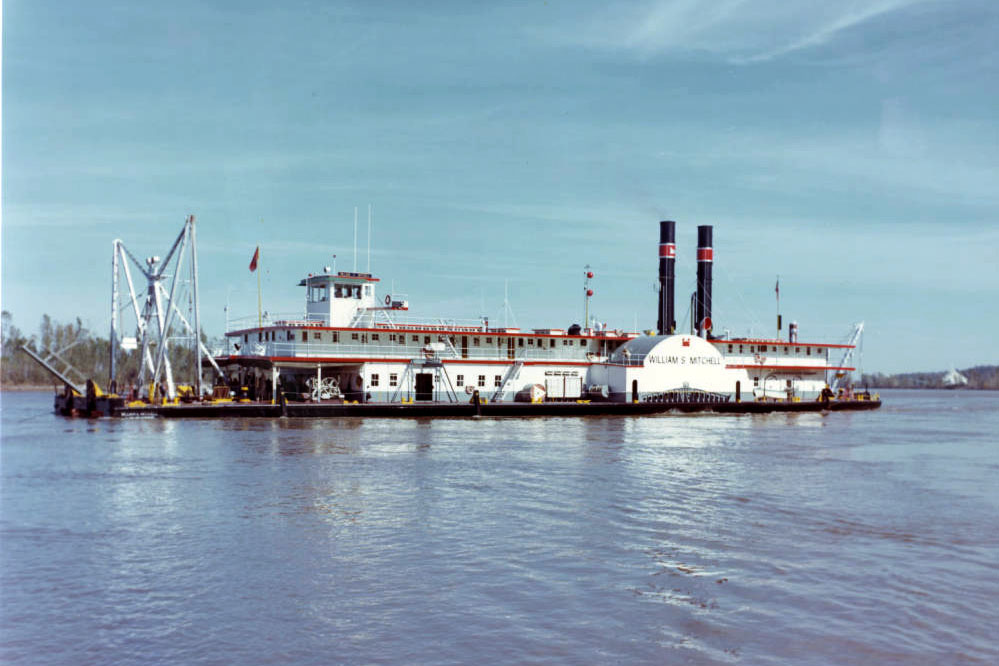 |
|
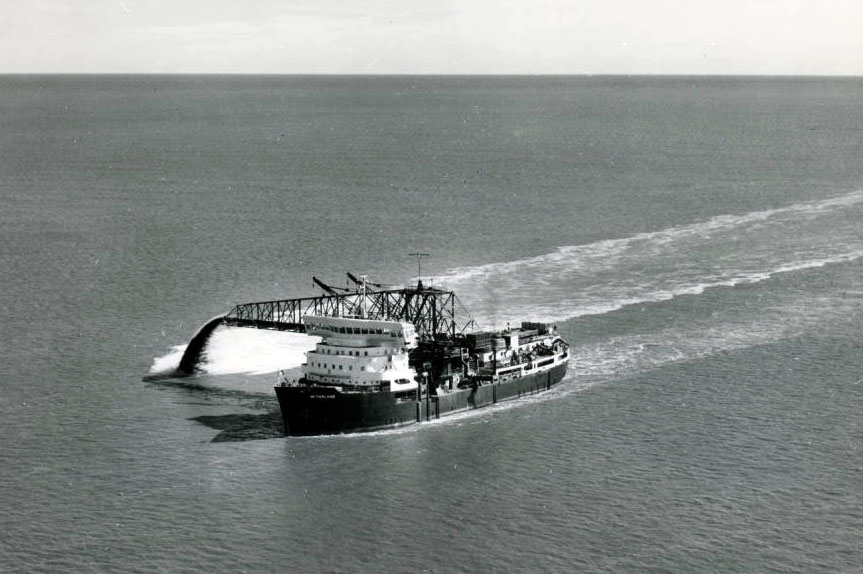 |
The Corps of Engineers dredge William S. Mitchell dredging on the Missouri River in the Kansas City District, fall 1973.
Office of History, Civil Works Images |
|
The Corps of Engineers medium-class hopper dredge McFarland working offshore at Brunswick, Georgia, 1978.
Office of History, Civil Works Images |
* * *
October 2022. No. 155.